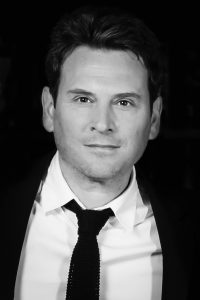
Purpose – it’s on everyone’s tongue these days. It might even have dethroned ‘authenticity’ as the buzzword of the year. But what is purpose, anyway? What does it have to do with a brand? Inadequately, purpose is being mistaken with social mission and CSR, with brands thinking that throwing a small donation towards a cause or NGO is enough to keep their ‘purpose box’ checked on their brand management sheets.
And indeed, it does… But purpose is far from being a PR tool and brands are slowly learning that they are missing something at the core of their existence – the ‘raison d’être’, as Robert names it himself.
In order to shed some light on what ‘purpose’ is and what is, ironically, its purpose, Brandingmag sat down with Robert Hoppenheim, Founder and President of Kindustry. For ten years, Robert has become a leading driver in social impact branding, advising organizations such as the Clinton Foundation, HIV/AIDS foundations, Sephora, Sotheby’s, and other notable brands evolving into purpose-driven organizations. Here’s what he has to say:
Brandingmag: What is ‘brand purpose’ in your expert opinion? Can you wrap a personal definition around it?
Robert Hoppenheim: Another way we define brand purpose is “vision” or “raison d’être” – which translates to “reason for being”.
The reason for being is a beacon, a statement of intention that defines what a brand is. It is the central statement of intent that informs everything the brand is and does. It is often confused with social mission or CSR, which are a different aspect of how a brand actualizes its purpose.
Purpose is at once the unifier and inspiration for an organization.
Bm: Looking back at more than 20 years in the game, what have you learned about purpose and how it connects to a brand and its strategies?
 RH: Having a meaningful purpose helps create deeper ties internally and externally with stakeholders (increased employee engagement, retention, customer loyalty, relationships with strategic partners, etc.).
RH: Having a meaningful purpose helps create deeper ties internally and externally with stakeholders (increased employee engagement, retention, customer loyalty, relationships with strategic partners, etc.).
What is often overlooked is the fact that an organization with a purpose at its core, one that it invests in it over time, one that it takes risks to promote, also ensures brand longevity and growth by fostering truly engaged, progressive, and innovative mindsets and culture. It is equally a key driver of a healthy and inspiring culture.
Brands today have begun to understand the need for purpose. The importance of developing a clearly defined purpose, however, and one that informs the entire organization at all levels cannot be understated.
Bm: Is it possible for commercial brands to go beyond CSR as a tool and become driven by social impact at their core, while still maintaining their commercial attributes?
RH: Definitely. As we always say, profit and the greater good are not merely aligned but highly synergistic: Minimizing the risk of harming the social/environmental sphere allows companies to inoculate themselves from acute losses of value. It also creates a culture of creative problem-solving that is absolutely necessary today as brands need to find less obvious methods of operating and manage ongoing disruption. Purpose is no longer a cost center but rather an opportunity to further the commercial viability of the business.
Bm: What are the outcomes for brands that have purely reactionary social missions? Is brand trust the main currency at play here, between the brand and its stakeholders?
RH: Finally, brands understand that symbols and slogans are no longer enough. And a lot of them have been called out recently. People are demanding more from brands: more transparency, greater accountability, etc.
Brands need to invest in a body of work and a holistic approach to social mission, otherwise, when they do react to a cultural issue, it is perceived as being inauthentic (see NFL vs. BLM, for example).
One also cannot be progressive in one area of the brand’s business and completely devoid of social investment (or worse, harmful) in another (see Revolve).
This is what trust is built on: Can a brand deliver consistently on its promise or not?
Bm: Larry Fink, CEO of Blackrock, said that purpose is part of a long-term strategy and profit is the short-term outcome. Do you agree? How can brands find their purpose, beyond the commercially-obvious dollar?
RH: It is definitely one way of looking at it. Purpose is the blueprint that allows a brand not only to achieve short-term outcomes but develop a resilience to disrupters along the way, and, moreover, navigate into future growth opportunities. The underlying philosophy is more adaptable and malleable to how culture and the world evolve than a short-term vision of maximizing business efficiency with a narrow perspective.
Bm: What are the main characteristics of a purpose-driven brand? Is it mandatory for some sort of social impact to be a part of the strategy?
RH: It really depends on how you see purpose. By definition, purpose implies something bigger than the business per se. Therefore, social impact will likely be one element of a purposeful brand. Now, social impact, broadly defined, need not be giving back in the traditional sense. It may involve empowering employees, giving a voice to members of your community, or beyond. It may be a method for working and acting that involves some higher ideal than for the optimization of profit.
That said, we see a purpose-driven brand as one that has set a clear compass based on the following key pillars:
- Clearly defined vision and social mission;
- Clear statement of the culture of the organization and how it comes to life;
- Clear statement of the community(ies) it touches and all the ways of engaging it and growing it authentically.
Bm: Is there something that traditional consulting agencies are doing wrong in their approach to assisting brands and their management? Does something need to change?
RH: I think so. Brands need to look at their consultants as thought-partners that challenge and push the boundaries of what is possible. Too often it is about placating an executive team or merely doing the work without insisting that the voice is authentic, powerful, in some cases a bit daring and certainly breakthrough.
In the cause space, for example, so much of the work that is coming out (and the ads and outreach during COVID-19 are a good example of this) are so generic that they scream capitulation and appeasement versus the opportunity to truly engage stakeholders, old and new.
Consultants and agencies need to act courageously. They need to instill the confidence in executives making decisions. Going back to purpose and vision – once the organization is clear and enthusiastic about the intention, it gives permission to be bold and create opportunities. Consultancies also need to look themselves for novel and diverse inputs that inform their work and help brands translate their communications in more differentiated ways. It has never been more important to stand out.
Bm: It’s been more than 10 years since you founded a distinct type of agency — one that took a different road compared to the standard consultancy. What commonplace agency traditions have you identified and removed in order to shape this new vision?
RH: I think it begins with our backgrounds. We come from law, management, consulting, beauty, fashion, and luxury brands. No one comes from traditional agencies so we can actually appreciate what is going on within the businesses of our clients.
Second, our inputs are usually quite deliberately different. We are into cultural references including art, politics, travel, film, architecture, and history.
Third, we have a definite sense of purpose for the type of work we want to do. Advising the UN on one day and M.A.C Cosmetics the next is what we love to do and we feel this polyvalence to borrow a French expression, and the ability to connect the dots between brands, business, creativity, artistry, and important global issues is what generates culturally relevant work and allows us to advise brands on what is next.
Bm: You placed your bet on hiring people with diverse backgrounds and international perspectives. What drove you to this decision and how has it worked out so far? What have you gained and what have you lost with this move?
RH: I think it goes beyond hiring people with diverse backgrounds. We actively engage with people with unique perspectives and try to learn as much as we can from the people we work with internally, client teams, and the people we meet along the way, from a cab driver in NYC, a chef in Montreal, a photographer in Havana, or an artist from Belgrade. Getting diverse people around projects was never a specific intention. It just always seemed like a natural thing to do. There is rarely anything lost if the vision is clear. That said, communicating in multiple languages is sometimes a bit challenging but in the gaps, there is some magic. It is about being open to it.
Bm: Please give one piece of advice to consultancies trying to break free from the traditional paradigm. What can they do to steer the brand management wagon in the right direction?
RH: I would say that one way of building a progressive consultancy is to find your voice. Why you? What does the world need with another one of us? If you can answer that question you are off to the races. And if you have the choice between attending a marketing conference or seeing a provocative art show on feminism, refugees or democracy, for example, choose the later…
Brands need to look at their consultants as thought-partners that challenge and push the boundaries of what is possible.
Bm: [BONUS QUESTION] Do you believe in true social repentance? Take Volkswagen, for example, who went full speed towards electric and environmental responsibility after being demolished by the ‘dieselgate’ scandal. Is their reactionary activity believable?
RH: Yes, I do. Brands have a human quality to them. They make mistakes, they are heroic, and they are tragic.
The story is written over time and there is a place for redemption. Nike comes to mind with the sweatshop controversy in the 90s and all the work they have done to become a more progressive company (environmentally and socially more recently – notwithstanding a few grave errors, like the Salazar partnership). The caveat is that it better be real, authentic and the brand really needs to put skin in the game.
Again, it has lost trust. Getting it back takes much more effort than losing it in the first place. And, who knows, its downfall may have been the best thing that ever happened to Volkswagen.
Cover image source: Ryoji Iwata
